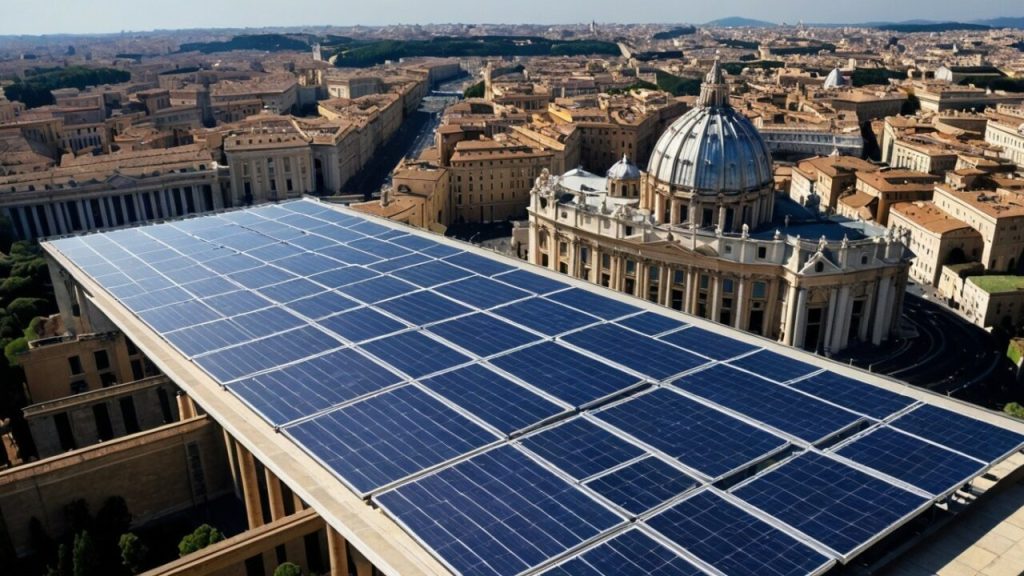Italy and the Holy See agreed to develop the 430-hectare Santa Maria Galeria site north of Rome into a solar farm designed to meet the Vatican’s full electricity needs, with any excess power provided to the local community.
The project preserves agricultural use and minimizes environmental impact; the Vatican will be exempt from Italian import taxes on panels but will not receive the financial incentives available to Italian residents. Italy can count the field toward EU clean energy targets.
Estimated cost is under €100 million ($114 million). Following Italian parliamentary approval, contracts will be tendered. The site—long controversial due to Vatican Radio towers—aligns with Pope Francis’s clean-energy push that Pope Leo XIV has pledged to advance.
Italy agreed Thursday to a Vatican plan to convert a 430-hectare (1,000-acre) field at Santa Maria Galeria—about 35 kilometers (20 miles) north of Rome—into a large solar farm intended to generate enough electricity to meet the Holy See’s needs and make Vatican City the world’s first carbon-neutral state. According to a Vatican statement, the agreement stipulates that development will preserve agricultural use of the land and minimize environmental impact on the territory.
While details were not released, the arrangement provides that the Vatican will be exempt from Italian taxes on importing solar panels, though it will not benefit from the financial incentives Italians receive when they install solar. Italy, for its part, can use the field in its accounting toward European Union clean energy targets. Officials said any electricity generated beyond the Vatican’s needs would be given to the local community, noting they were speaking on condition of anonymity because the agreement was not public.
Vatican officials estimate the project will cost under €100 million ($114 million). Once the Italian parliament approves the arrangement—required because the deal carries financial implications for a territory with extraterritorial status—contracts could be put out for bids. The agreement was signed by Vatican foreign minister Archbishop Paul Gallagher and Italy’s ambassador to the Holy See, Francesco Di Nitto.
RELATED ARTICLE: Vatican to Become 8th Country to Achieve 100% Green Energy
The Santa Maria Galeria site has a long history of controversy stemming from electromagnetic waves emitted by Vatican Radio towers located there since the 1950s. The once-rural area is dominated by roughly two dozen short- and medium-wave antennae that transmit news from the Catholic Church in dozens of languages worldwide. As the area became more developed, residents complained of health problems, including childhood leukemia, which they attributed to the towers’ emissions. The Vatican denied any causal link but reduced transmissions.
Pope Francis last year asked the Vatican to study converting the area into a solar farm to put into practice his call to transition away from fossil fuels and adopt clean, carbon-neutral energy sources. Pope Leo XIV visited the site in June and affirmed his intention to see Francis’s vision through. Leo has strongly embraced Francis’s ecological mantle, recently using a new set of prayers and readings inspired by Pope Francis’s environmental legacy.
In the 1990s, at the height of the controversy, residents sued Vatican Radio officials, alleging emissions exceeded Italian legal limits, but the court cleared the transmitter. In 2012, the Vatican announced it was halving hours of transmission from the site—not due to health concerns, but because cost-saving technological advances in internet broadcasting reduced the need for traditional radio.
Follow ESG News on LinkedIn

